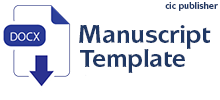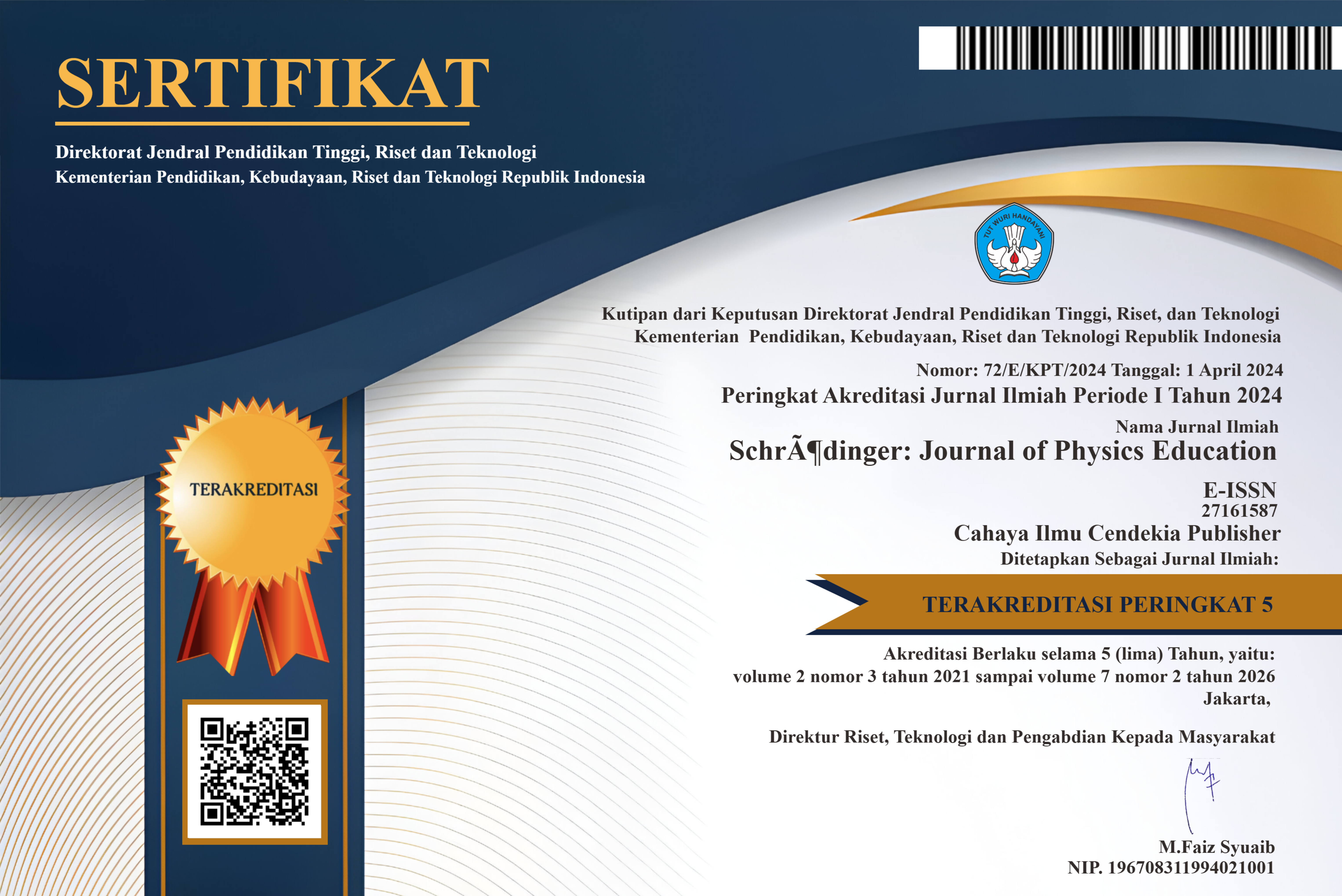Linking Pre-existing Metacognition Practices and Students’ Performance in High School Physics
Abstract
Purpose of the study: This research aims to provide insight on how student’s pre-existing metacognitive strategies influences their academic performance, specifically in learning physics.
Methodology: This research administered the Physics Metacognition Inventory (PMI) scale to 117 Grade 9 students of the laboratory high school of MSU-Iligan Institute of Technology. PMI scale has an internal consistency of 0.90, indicating high-reliability of the instrument in measuring the constructs it intends to measure. Shapiro-Wilk’s test for normality reveals non-normal distribution (p-values < 0.05) , thus a non-parametric test (i.e., spearman rank correlation) is utilized to establish statistical correlation among the variables of interest (i.e, level of proficiency and factors on Physics Metacognition Inventory). Statistical analysis is done using RStudio Version 2023.06.0+421 (2023.06.0+421).
Main Findings: Results suggest that student’s knowledge of cognition exhibits a strong positive correlation with their physics academic performance. Moreover, all five components of regulation of cognition showed positive correlation with the level of physics performance. However, the strongest predictor is the dimension of evaluation.
Novelty/Originality of this study: This research highlights the role of pre-existing metacognitive strategies and how it is correlated to academic performance in a physics classroom. Understanding how each of the dimensions of metacognition correlates to physics performance can have an important implications on how physics instruction might be productively given to junior high school students especially with the goal of honing critical evaluation of one’s thinking, conceptual conclusions, and physical sensibility of solutions.
References
G. P. Thomas, “Metacognition in science education: past, present and future considerations,” in Second International Handbook of Science Education, 2012. doi: 10.1007/978-1-4020-9041-7_11.
G. P. Thomas and C. J. McRobbie, “Using a metaphor for learning to improve students’ metacognition in the chemistry classroom,” J Res Sci Teach, vol. 38, no. 2, 2001, doi: 10.1002/1098-2736(200102)38:2<222::AID-TEA1004>3.0.CO;2-S.
G. Stephanou and M.-H. Mpiontini, “Metacognitive knowledge and metacognitive regulation in self-regulatory learning style, and in its effects on performance expectation and subsequent performance across diverse school subjects,” Psychology, vol. 08, no. 12, 2017, doi: 10.4236/psych.2017.812125.
A. Ben-David and N. Orion, “Teachers’ voices on integrating metacognition into science education,” Int J Sci Educ, vol. 35, no. 18, pp. 3161–3193, Dec. 2013, doi: 10.1080/09500693.2012.697208.
A. Zohar and S. Barzilai, “A review of research on metacognition in science education: current and future directions,” Stud Sci Educ, vol. 49, no. 2, pp. 121–169, Sep. 2013, doi: 10.1080/03057267.2013.847261.
J. Perry, D. Lundie, and G. Golder, “Metacognition in schools: what does the literature suggest about the effectiveness of teaching metacognition in schools?,” 2019. doi: 10.1080/00131911.2018.1441127.
M. V. J. Veenman, B. H. A. M. Van Hout-Wolters, and P. Afflerbach, “Metacognition and learning: conceptual and methodological considerations,” 2006. doi: 10.1007/s11409-006-6893-0.
K. A. Ericsson, M. J. Prietula, and E. T. Cokely, “The making of an expert,” 2007.
A. H. Schoenfeld, “What’s all the fuss about metacognition?,” in Cognitive Science and Mathematics Education, 2013. doi: 10.4324/9780203062685.
G. Taasoobshirazi and J. Farley, “Construct validation of the physics metacognition inventory,” Int J Sci Educ, vol. 35, no. 3, 2013, doi: 10.1080/09500693.2012.750433.
H. Wu and S. O. Leung, “Can likert scales be treated as interval scales?—a simulation study,” J Soc Serv Res, vol. 43, no. 4, 2017, doi: 10.1080/01488376.2017.1329775.
G. Norman, “Likert scales, levels of measurement and the ‘laws’ of statistics,” Advances in Health Sciences Education, vol. 15, no. 5, 2010, doi: 10.1007/s10459-010-9222-y.
K. A. Batterton and K. N. Hale, “The Likert scale: what it is and how to use it,” Phalanx, vol. 50, no. 2, pp. 32–39, Jun. 2017, [Online], Available: http://www.jstor.org/stable/26296382
P. R. Pintrich, “The role of metacognitive knowledge in learning, teaching, and assessing,” Theory Pract, vol. 41, no. 4, 2002, doi: 10.1207/s15430421tip4104_3.
D. K. Shah and Y. Modna, “The impact of medical students’ metacognitive awareness level on their academic performance,” Int J Res Med Sci, vol. 10, no. 11, p. 2363, Oct. 2022, doi: 10.18203/2320-6012.ijrms20222830.
Z. R. Mevarech and C. Amrany, “Immediate and delayed effects of meta-cognitive instruction on regulation of cognition and mathematics achievement,” Metacogn Learn, vol. 3, no. 2, pp. 147–157, Aug. 2008, doi: 10.1007/s11409-008-9023-3.
A. Young and J. D. Fry, “Metacognitive awareness and academic achievement in college students,” Journal of the Scholarship of Teaching and Learning, vol. 8, no. 2, 2008, [Online], Available: https://eric.ed.gov/?id=EJ854832
Dr. Neena Sawhney and Dr. Sneh Bansal, “Metacognitive awareness of undergraduate students in relation to their academic achievement,” International Journal of Indian Psychology, vol. 3, no. 1, 2015, doi: 10.25215/0301.136.
J. J. Mintzes, J. H. Wandersee, and J. D. Novak, “Teaching Science for Understanding: A Human Constructivist View”, Educational Psychology series. Academic Press, 2005, doi: 10.1016/B978-0-12-498360-1.X5000-4.
L. Mason, “Cognitive and metacognitive aspects in conceptual change by analogy,” Instructional Science, vol. 22, no. 3, pp. 157–187, May 1994, doi: 10.1007/BF00892241.
A. Zohar, “The nature and development of teachers’ metastrategic knowledge in the context of teaching higher order thinking,” Journal of the Learning Sciences, vol. 15, no. 3, 2006, doi: 10.1207/s15327809jls1503_2.
A. J. Hughes, “Educational complexity and professional development: teachers’ need for metacognitive awareness,” Journal of Technology Education, vol. 29, no. 1, 2017, doi: 10.21061/jte.v29i1.a.2.
M. D. N. Lew and H. G. Schmidt, “Self-reflection and academic performance: Is there a relationship?,” 2011. doi: 10.1007/s10459-011-9298-z.
N. Erceg, I. Aviani, and V. Mešić, “Probing students’ critical thinking processes by presenting ill-Defined physics problems,” Revista Mexicana de Fisica E, vol. 59, no. 1, 2013, [Online], Available: https://scielo.org.mx/pdf/rmfe/v59n1/v59n1a8.pdf
P. R. Pintrich and A. Zusho, “Student Motivation and Self-Regulated Learning in the College Classroom BT - Higher Education: Handbook of Theory and Research,” J. C. Smart and W. G. Tierney, Eds., Dordrecht: Springer Netherlands, 2002, pp. 55–128. doi: 10.1007/978-94-010-0245-5_2.
Y. eun Kim, A. C. Brady, and C. A. Wolters, “College students’ regulation of cognition, motivation, behavior, and context: distinct or overlapping processes?,” Learn Individ Differ, vol. 80, 2020, doi: 10.1016/j.lindif.2020.101872.
H. K. Ning and K. Downing, “The reciprocal relationship between motivation and self-regulation: a longitudinal study on academic performance,” Learn Individ Differ, vol. 20, no. 6, 2010, doi: 10.1016/j.lindif.2010.09.010.
E. B. Coleman and B. Shore, “Problem–solving processes of high and average performers in physics,” Journal for the Education of the Gifted, vol. 14, no. 4, 1991, doi: 10.1177/016235329101400403.
J. Tuminaro, “Understanding students’ poor performance on mathematical problem solving in physics,” 2004. doi: 10.1063/1.1807267.
L. Ding, N. Reay, A. Lee, and L. Bao, “Exploring the role of conceptual scaffolding in solving synthesis problems,” Physical Review Special Topics - Physics Education Research, vol. 7, no. 2, 2011, doi: 10.1103/PhysRevSTPER.7.020109.
Copyright (c) 2025 Kim Diate, Rayyanah R. Benasing , Krystine Mae R. Tee-Pastidio

This work is licensed under a Creative Commons Attribution 4.0 International License.
Authors who publish with this journal agree to the following terms:
- Authors retain copyright and acknowledge that the Schrödinger: Journal of Physics Education is the first publisher licensed under a Creative Commons Attribution 4.0 International License.
- Authors are able to enter into separate, additional contractual arrangements for the non-exclusive distribution of the journal's published version of the work (e.g., post it to an institutional repository or publish it in a book), with an acknowledgment of its initial publication in this journal.
- Authors are permitted and encouraged to post their work online (e.g., in institutional repositories or on their website) prior to and during the submission process, as it can lead to productive exchanges and earlier and greater citation of published work.







.png)
.png)








.png)
.png)
.png)







